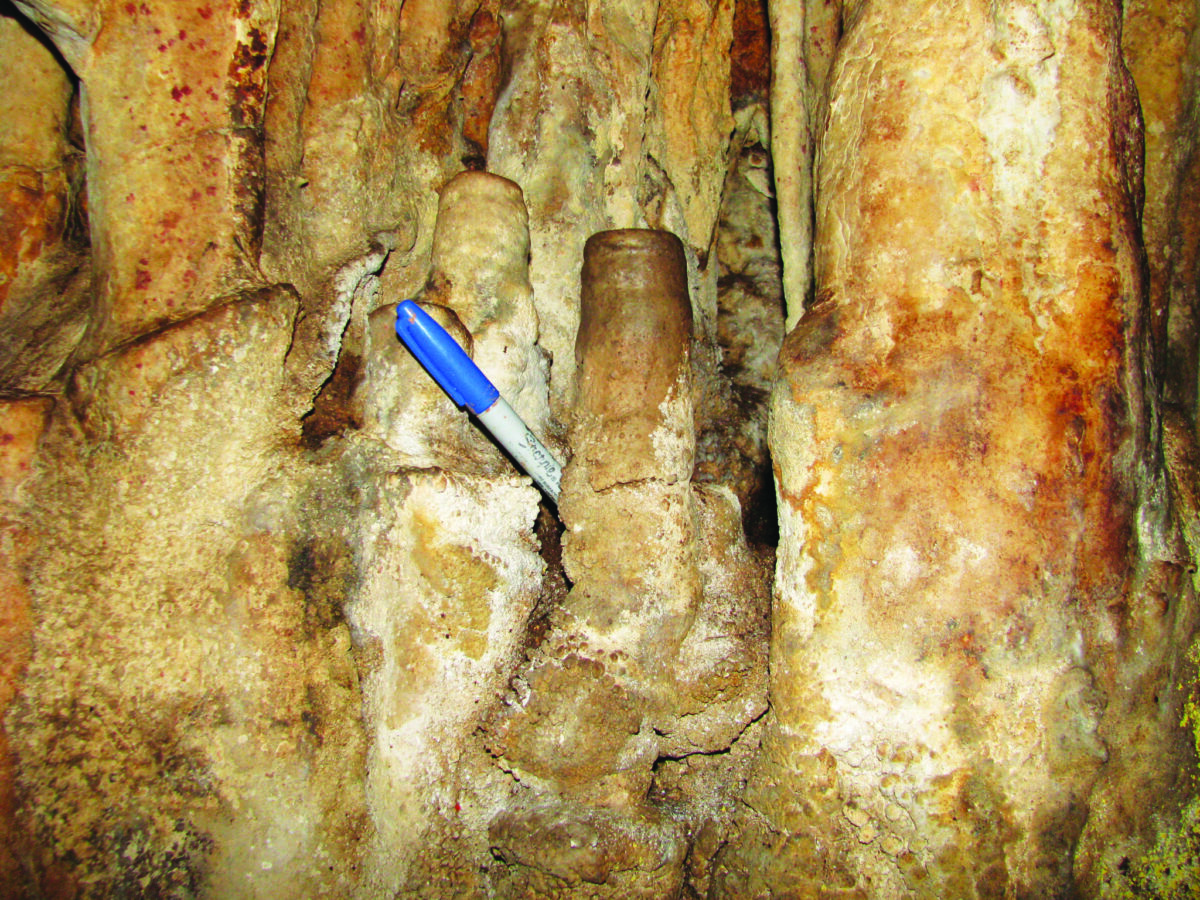A thousand years ago the great Maya culture of Central America collapsed. Climate change was one factor that stressed the civilization until it fractured: A prolonged period of intense and persistent drought left the Maya’s descendants to carry on without a robust elite urban class.
Living on the Yucatán Peninsula, the Maya depended on seasonal rainfall. In previous research, scientists suggested that a prolonged drop in hurricane activity pushed the region into drought from 800 to 950 C.E., coincident with the Maya collapse, or Terminal Classic period. Using new observations, however, Frappier et al. showed that hurricane frequencies during the 9th and 10th centuries were not appreciably different from those in the surrounding centuries.
The authors’ observations—a 1642-year record of hurricane activity spanning 365 to 2007 C.E.—are derived from a relatively novel technique.
The northern Yucatán Peninsula’s Ring of Cenotes region is peppered with caves linked to the water table, and growing in one cave 4.5 meters above the water level is a stalagmite nearly 17 centimeters tall. The region has strong annual wet and dry seasons, and each year the stalagmite grows a new layer couplet of bright and dark calcite.
When heavy hurricane rains raise the water table, the cave floods, immersing the stalagmite in water for a few days. As the water recedes, the stalagmite is coated in a thin film of mud before it resumes growing, and the distinctive mud layer becomes locked between carbonate layers. By counting the annual couplets within the stalagmite and noting which years contained mud layers, the authors derived a rough measure of hurricane activity from year to year.
During periods of prolonged drought, the regional water table is lower, so the cave should not be flooded by hurricanes as often. Contrary to their expectations, the authors found that the cave flooded regularly throughout the Terminal Classic droughts.
The authors present two explanations for this curiosity: Either Yucatán hurricanes during the drought period were disproportionately strong and frequent, or the megadrought was punctuated by breaks and had normal hurricanes. (Geophysical Research Letters, doi:10.1002/2014GL059882, 2014)
—Colin Schultz, Writer
Citation: Schultz, C. (2014), A dearth of hurricanes cannot explain Maya collapse, Eos Trans. AGU, 95(48), 452, doi:10.1002/2014EO480006.
© 2014. American Geophysical Union. All rights reserved.
© 2014. American Geophysical Union. All rights reserved.

